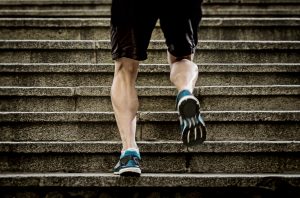Exercising in Hot Weather
As we move into summer it is important to remember how heat affects your body and the implications of exercising in hotter temperatures.
Exercising increases the workload of your heart as it has to provide oxygen, via your blood, to the exercising muscles. Exercising in heat further increases the workload of your heart as your body must maintain a constant temperature of 37°C. To accomplish this constant temperature in hot weather your body expands the blood vessels in the skin. Your heart then pumps blood to your skin, as well as your exercising muscles, allowing your blood to be close to the surface. As you perspire, your sweat evaporates from the skin allowing it to cool down.
Heat-related illnesses occur when your sweat cannot evaporate fast enough to keep your body cool. This can be exacerbated with increased humidity as water vapour in the air prevents your sweat from evaporating as easily as it would in drier conditions. Signs and Symptoms of heat-related illnesses include deterioration in exercise performance, weakness, fatigue, muscle cramps, nausea or vomiting, excessive sweating, headaches, dizziness or light-headedness, visual problems, confusion, irritability, low blood pressure, and increased heart rate.


Heat related illnesses are mostly preventable by using common sense precautions. These include drinking enough fluids prior, during and after exercise; dressing in loose, lightweight clothes; avoiding exercise in the middle of the day when temperatures are at their highest; wearing sunscreen; being aware of the day’s weather; and ensuring that you have acclimatised to the heat by slowly increasing the intensity of your workout.
The benefit of exercising in hot weather is that your body adapts to the extra workload. On a hot day your brain pre-emptively slows your body down in an effort to conserve your energy. But by training in these conditions your body will adapt to delay increases in your body temperature, increase your sweat production, improve your cardiovascular fitness and improve your exercise performance.
To properly acclimatize to the heat you should spend time outside in the heat when you are not exercising, for a minimum of 2 hours every day. To train in the heat start slow with shorter less strenuous exercise sessions and gradually increase your workout throughout the week. A few additional tips if you are exercising in heat is to increase your sodium intake in the first few days to make up for the salt lost in your sweat, don’t exercise if you feel sick and get plenty of sleep the night before your exercise session.
Here at Melbourne Osteohealth we offer individual sessions and small group classes to build strength, flexibility and cardiorespiratory fitness. If you are interested in improving your fitness over summer the exercise physiologists at Melbourne Osteohealth are here to help. We offer early morning and evening small group classes as well as one-on-one sessions throughout the day. We also have air conditioning for those of us that are less heat tolerant.
